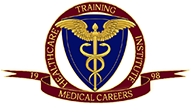Sonography schools in NJ and around the country strive to stay at the leading edge of technology being utilized in the healthcare continuum. That being said, the field of ultrasound technology develops and changers very fast. Additionally, the acceptance of new forms of technology often happens in a piecemeal fashion across the country. The best way for sonography schools to respond to these changes and ensure that their graduates are prepared is to design curriculums that build in an awareness and anticipation of emerging technologies.
Many of the advances that happen in ultrasound technology affect particular areas of the body in terms of imaging rather than the body overall. One of the latest ultrasound imaging modalities that is taking hold is in cardiovascular ultrasound. The advent of three-dimensional echocardiography (3DE) and cardiac mechanics (strain, torsion) is gaining wider acceptance due to changing procedures in heart surgery.
Cancer detection is another area where ultrasound technology is changing and adapting in order to provide more effective imaging results. Traditionally, the high-frequency soundwave approach to viewing soft tissue has not provided the level of resolution that is required in cancer detection. New remedies to this challenge are being explored such as with special contrast agents that can improve resolution.
Emerging research that was reported in a recent edition of PLOS ONE details how biomedical engineers from the University Of North Carolina School Of Medicine explain their early results with the new contrast agent. While this is still in the experimental stage, it is exactly the type of advances that the leading sonography schools in NJ and around the country strive to raise awareness of among their faculty.
The increasing use of metamaterials has recently been an area that shows some possible advancement for sonography technology moving forward. The material converts ultrasound waves into optical signals that can be used to produce an image that shows much greater detail than conventional sonographic technology. The metamaterial and its potential for ultrasound technology was recently reported in the online science, research, and technology news service Phys.org, and originally profiled in the magazine Advanced Materials.
While these technologies are still within the research and development stages, they are likely to find their way into all facets of the healthcare continuum. This level of rapid development and adoption shows why sonography schools in NJ and elsewhere must make emerging technology awareness an integral part of teaching today’s sonography technicians. This awareness of constant change helps shape courses and curriculums on the macro level so that students understand the need to be lifelong learners in order to respond to the evolving needs of healthcare.
